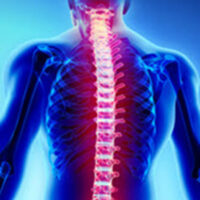Understanding Complete V. Incomplete Spinal Cord Injuries

The spine is among the hardest working parts of the human body, providing stability while enabling movement and flexibility. The vertebrae also play an important role in protecting the spinal cord, which comprises the central nervous system along with the brain. Unfortunately, these strong bones may not be enough to withstand a violent blow to the back. According to the National Spinal Cord Injury Statistical Center (NSCISC), there are currently around 294,000 people living in the US who have suffered injuries, and another 17,810 new cases are added every year.
The effects of a spinal cord injury (SCI) vary considerably. Some victims experience a full recovery, while others suffer full paralysis because of the trauma. The implications are heavily influenced by whether the injury to the spinal cord is complete or incomplete, a medical distinction that refers to the extent of the damage. The NSCISC reports that the most common cause of SCIs is accidents, so you should discuss remedies with an Owings Mills spine injury attorney. A summary of complete versus incomplete SCIs should convince you that legal help is critical.
Overview of Spinal Cord Injuries: The spinal cord is made up of soft tissue that extends down the length of your back and incorporates a complicated nerve network. When the bones of the vertebrae sustain a violent blow from an accident, they may not be strong enough to protect it. The spinal cord also suffers trauma in the following ways:
- Incomplete SCI: There is some damage to the spinal cord, but the tissues remain largely intact. A victim may retain some feeling and function, and the spinal cord is still able to transmit some messages from the brain.
- Complete SCI: With this injury, the spinal cord is either fully compressed or severed. Messages from the brain cannot make it through the damaged area.
With both incomplete and complete spine injuries, the location of the trauma is a significant factor. Damage to the lower back will affect the lower extremities, but the consequences are more severe with trauma to the upper back. Organs and entire body systems could be affected by a complete SCI to the cervical spine near the neck. The higher the spinal injury, the more destruction to the central nervous system.
How Spine Injuries Happen: Accidents are the main reason for SCIs according to NSCISC, with traffic crashes topping the list. Auto collisions are included in this assessment, but keep in mind that pedestrian and bicycle accidents can also lead to serious spine injuries.
Slips, trips, and falls are the second leading cause of SCIs. NSCISC also notes that sports and recreational accidents are common, and some of these injuries are the result of intentional physical violence.
Our Owings Mills Spine Injury Lawyers Will Guide You Through the Legal Process
If you or a loved one suffered SCI in an accident, please contact Furman | Honick Law right away to discuss your legal options. You can call 410-844-6000 or visit our website to schedule a free consultation at our offices in Owings Mills or Baltimore, MD.
Source:
nscisc.uab.edu/Public/Facts%20and%20Figures%202020.pdf